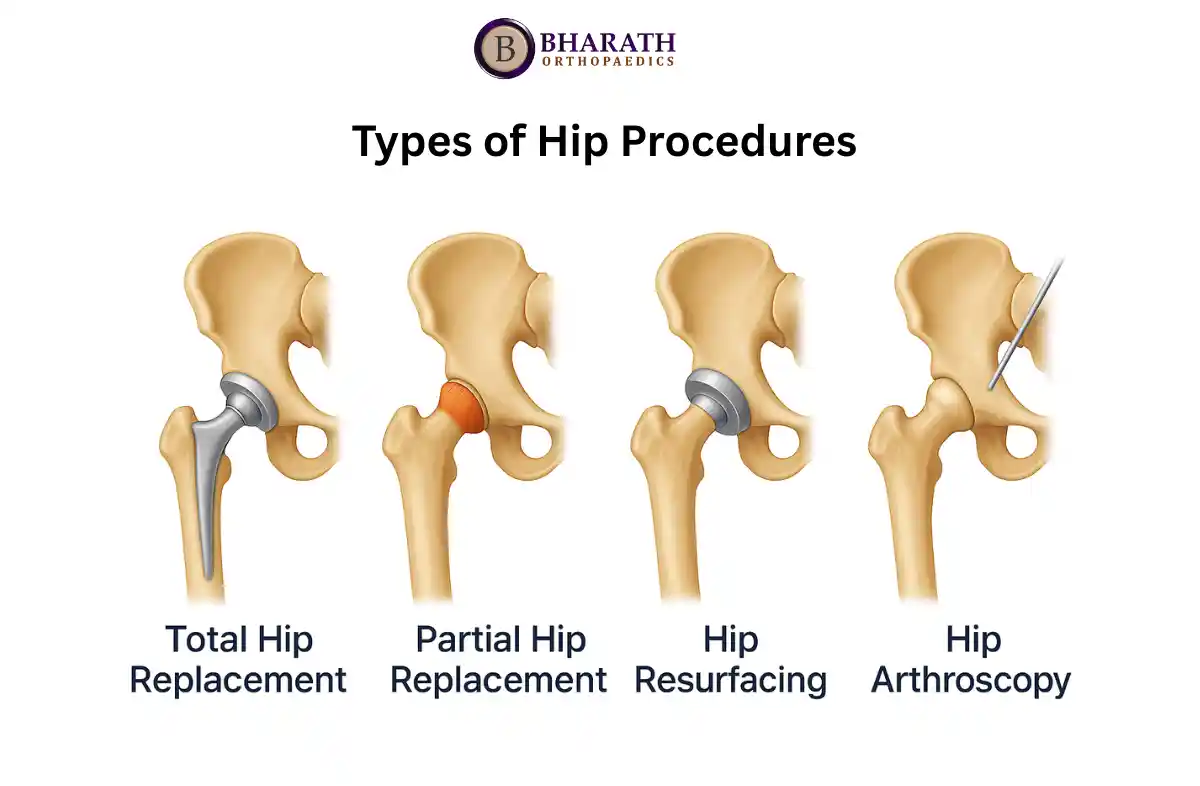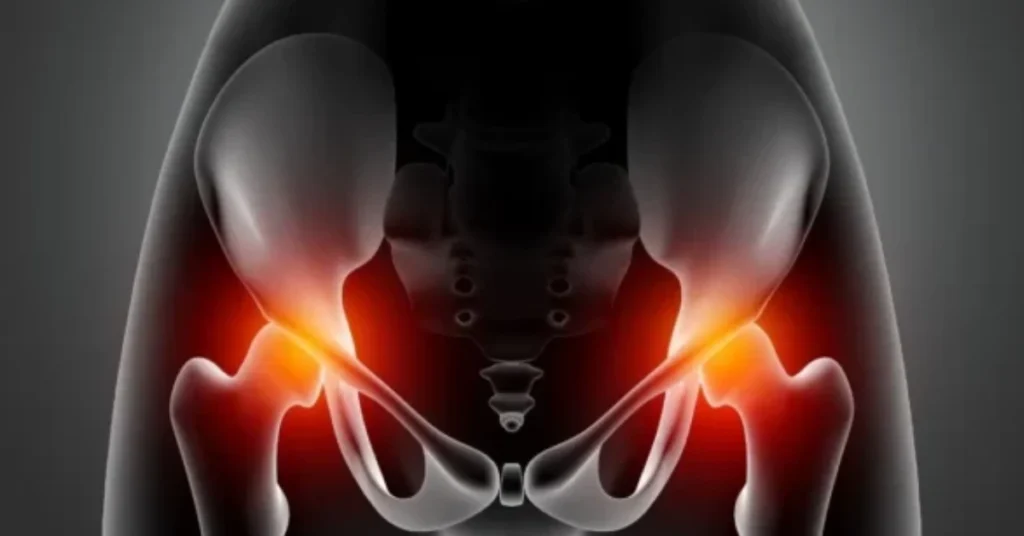Hip pain and mobility issues can significantly affect quality of life, making even simple daily activities difficult. With advanced hip procedures in Chennai, patients now have access to world-class surgical and non-surgical treatments. These procedures are designed to restore joint function, relieve chronic pain, and improve long-term mobility. Chennai is home to some of India’s leading hospitals and orthopaedic doctors in Chennai, offering a wide range of hip treatments tailored to patient needs.
Understanding Hip Problems
The hip joint is one of the most crucial weight-bearing joints in the body. It allows walking, running, sitting, and climbing stairs. However, due to aging, injuries, or medical conditions, the joint can wear down and lead to significant pain. When conservative treatments like medication and physiotherapy no longer help, doctors recommend hip replacement surgery in Chennai.
Common Conditions Requiring Hip Procedures
- Osteoarthritis – The most common reason for hip surgeries. The cartilage covering the hip bones wears away, leading to pain and stiffness.
- Rheumatoid Arthritis – An autoimmune condition causing inflammation, swelling, and deformity in the hip.
- Avascular Necrosis – Loss of blood supply to the hip bone, leading to bone death and collapse.
- Hip Fractures – Often caused by accidents or falls, especially in older adults.
- Hip Dysplasia – A congenital condition where the hip socket doesn’t fully cover the ball portion of the upper thighbone.
For patients facing these issues, orthopaedic doctors in Chennai recommend tailored treatment plans ranging from pain management to advanced surgical options.
Types of Hip Procedures in Chennai
Specialized hospitals provide a variety of hip procedures in Chennai based on the severity of the condition. Some of the most effective treatments include:
1. Total Hip Replacement (THR)
This is the most common hip replacement surgery in Chennai. In this procedure, both the ball (femoral head) and socket (acetabulum) are replaced with artificial implants. It is recommended for patients with severe arthritis, avascular necrosis, or complex hip fractures. The procedure offers long-lasting pain relief and improved mobility.
2. Partial Hip Replacement
Also known as hemiarthroplasty surgery, this surgery replaces only the damaged femoral head while preserving the natural socket. It is typically used for hip fractures in elderly patients. Recovery is relatively faster compared to total replacement.
3. Revision Hip Replacement
When an existing implant fails or wears out, surgeons perform a revision surgery to replace it with a new prosthesis. This is a complex procedure requiring experienced knee replacement surgeons in Chennai and hip specialists.
4. Minimally Invasive Hip Surgery
Modern techniques now allow smaller incisions, less blood loss, and faster recovery. These procedures reduce post-surgical pain and shorten hospital stays, making them highly preferred.
5. Hip Arthroscopy
A minimally invasive technique where a small camera is inserted to diagnose and treat problems such as labral tears, cartilage damage, or impingement. It is ideal for younger patients and athletes.
6. Resurfacing Hip Arthroplasty
Unlike traditional replacement, resurfacing preserves more bone by covering the femoral head with a metal cap. It is suitable for younger, more active patients who want to maintain higher activity levels.
7. Regenerative Treatments
Innovative therapies such as Platelet-Rich Plasma (PRP) injections and stem cell therapy are being used for cartilage regeneration and hip pain treatment. These methods are non-surgical and focus on healing damaged tissues naturally.
Choosing the Best Hip Procedures in Chennai
When selecting treatment, it is important to consult experienced surgeons and hospitals known for high success rates. The best hip procedures in Chennai combine advanced technology, skilled surgeons, and personalized patient care. Orthopaedic specialists analyze factors such as age, medical history, severity of damage, and lifestyle goals before recommending the most appropriate procedure.

Hip Replacement Surgery Cost in Chennai
The hip replacement surgery cost in Chennai varies depending on multiple factors. On average, the cost ranges between ₹2,00,000 and ₹5,00,000. The following aspects influence the pricing:
- Type of Procedure – Total, partial, or revision surgery.
- Implant Choice – Standard implants, high-flex, or imported prosthetics.
- Hospital Facilities – Premium hospitals may charge more for advanced technology and infrastructure.
- Surgeon’s Expertise – A senior or the best doctor with years of experience may have higher consultation and surgery fees.
- Post-Surgery Care – Rehabilitation, physiotherapy, and follow-up visits add to the total expense.
Patients should always consult their surgeon to receive an accurate estimate based on their individual needs. Since the hip replacement surgery cost in Chennai differs from one hospital to another, comparing options can help in selecting the most suitable treatment.
Recovery After Hip Replacement Surgery in Chennai
Post-surgery recovery is crucial for long-term success. Most patients can start walking with support within a few days. A structured rehabilitation plan includes:
- Physiotherapy – Strengthens muscles and restores movement.
- Pain Management – Medications and exercises to minimize discomfort.
- Nutritional Guidance – A balanced diet including the best supplements after hip replacement surgery to promote healing and bone strength.
- Lifestyle Adjustments – Avoiding high-impact activities, but continuing low-impact exercises like walking or swimming.
Full recovery may take 3–6 months depending on the type of procedure.

Rehabilitation and Physiotherapy
Rehabilitation plays a vital role in restoring joint function. Most hospitals in Chennai provide customized physiotherapy programs that focus on:
- Strengthening surrounding muscles
- Improving joint flexibility
- Preventing complications such as blood clots
- Encouraging a return to an active lifestyle
Non-Surgical Alternatives for Hip Pain
Not all patients require surgery immediately. Some non-surgical treatment for osteoporosis, medications for arthritis, and physical therapy may be suggested. Arthritis doctors often recommend lifestyle modifications and joint injections to delay surgery when possible.
Managing Bone Health
Bone-related conditions often contribute to hip and joint problems. For instance, patients may require treatment for osteoporosis to prevent fractures and ensure long-term bone strength. Proper diet, supplements, and medical care are essential to maintain bone density.
Role of Arthritis Specialists
Arthritis is one of the leading causes of hip pain and disability. Consulting experienced arthritis doctors helps patients manage symptoms and delay the need for surgical procedures. These specialists also provide holistic care including pain management, injections, and physiotherapy guidance.
Joint Replacement in Chennai
Chennai is also recognized for advanced joint replacement surgery, covering both hip and knee treatments. Patients can trust the expertise of specialists who combine technology with clinical experience to deliver the best results.
Why Chennai is a Preferred Destination for Hip Procedures
Chennai has become a leading hub for medical tourism in India, particularly for orthopaedics and joint replacement surgery. Patients choose Chennai because of:
- Highly experienced orthopaedic and hip surgeons.
- State-of-the-art hospitals equipped with robotic and minimally invasive technology.
- Affordable treatment compared to international standards.
- Comprehensive post-surgical care and rehabilitation programs.
With world-class healthcare infrastructure and skilled surgeons, Chennai offers some of the most reliable outcomes for hip surgeries.
Conclusion
Hip pain and limited mobility no longer have to restrict an active lifestyle. Modern hip procedures in Chennai offer effective surgical and non-surgical solutions for lasting relief. By choosing the right hospital and experienced surgeon, patients can ensure optimal outcomes. Understanding the factors affecting hip replacement surgery cost helps in better planning. With advanced treatments available, individuals can regain independence and reduce discomfort. Ultimately, these procedures enable a healthier, more active, and fulfilling life.

